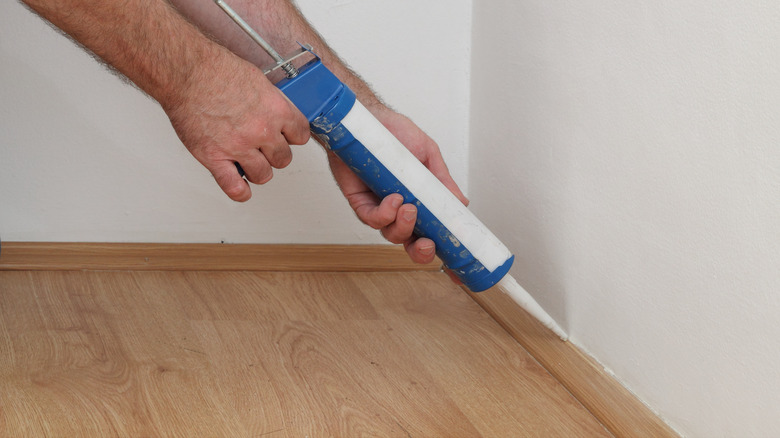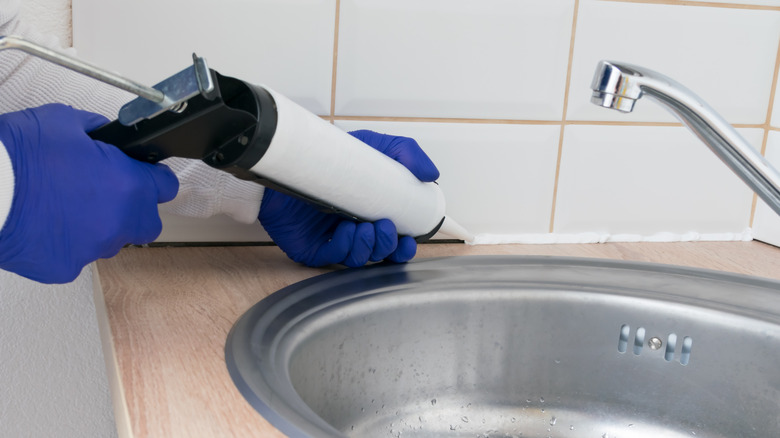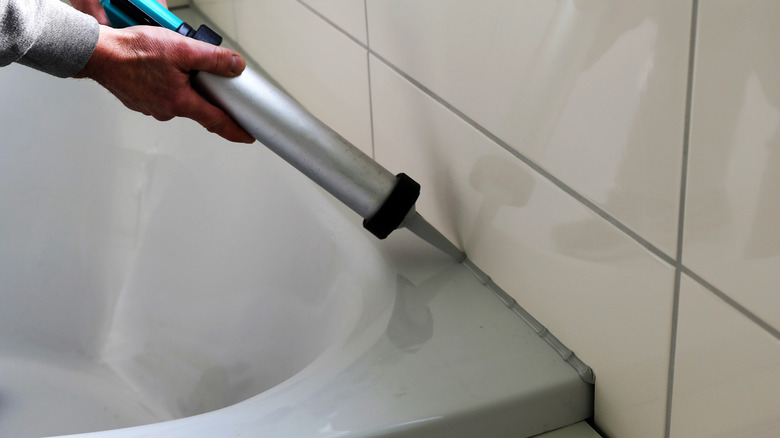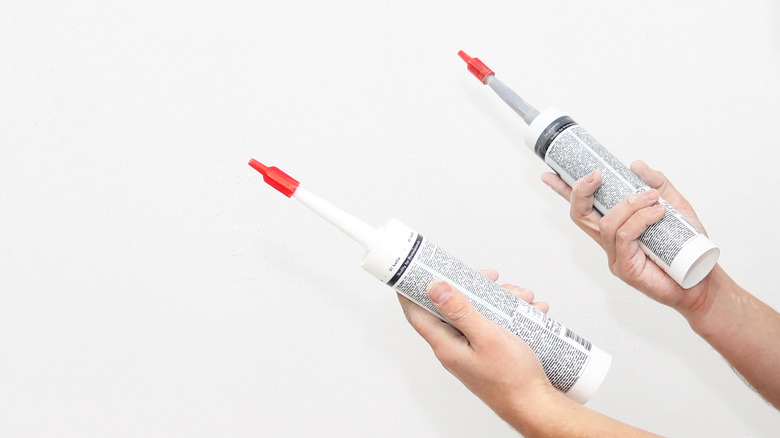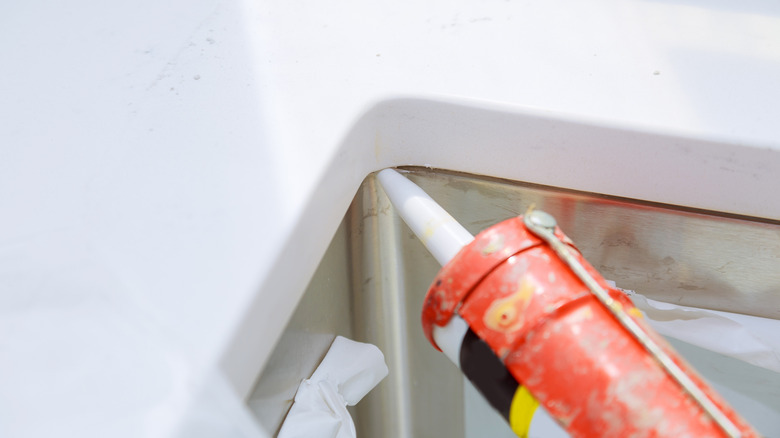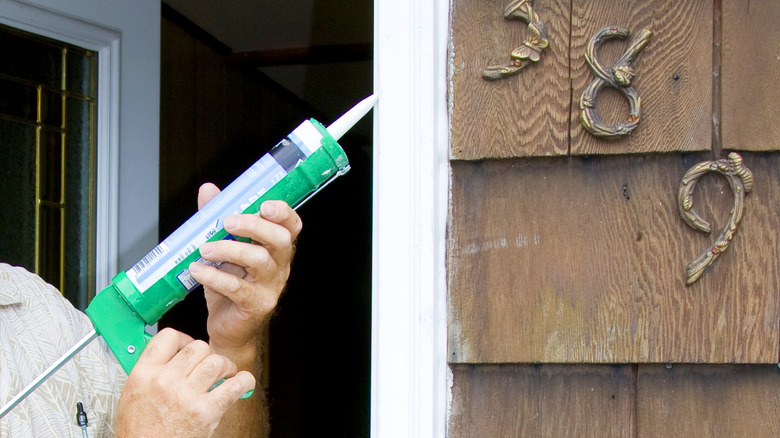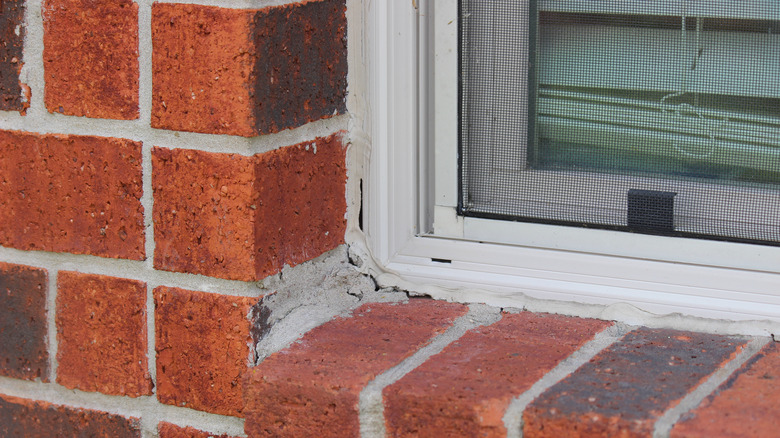Caulk Vs. Sealant: What's The Difference?
Often used interchangeably due to their similarities in use, both caulk and sealant serve to seal joints and fill gaps in between stationary building materials. They are most commonly used to prevent water leaks and air drafts but also serve to fix cracks in walls and roofs, finish trim and moldings, keep kitchen gaps crumb-free, touch up imperfect tiles, and even keep insects and other pests out of your home, per Bob Vila.
While caulk and sealant can sometimes be used for the same purposes, some key differences set them apart from each other. They each have their pros and cons and are best for different areas of the home. Mainly, caulk is used to seal construction cracks, while sealant is used to bind surfaces and certain materials together. Many factors are at play when choosing one or the other, such as the material you are using it on, the location, and whether or not it's an area prone to getting wet, for example.
What is the difference in the application?
In terms of application, sealant and caulk are relatively similar. Both need to be applied with a caulking gun, explains Badeloft, which is why sealant is often referred to as caulk and why confusing both of them can be quite easy.
According to The Spruce, the application process is quite straightforward for both of these sealing agents. Once you've chosen the caulk or sealant that's right for you, you'll want to remove any old caulk or sealant on the surface, then clean it with soap and water. Apply tape to the surface where you want the caulk or sealant to stop. Finally, with the gun at a 45-degree angle, apply the caulk or sealant, smooth the joint, and remove the tape. That's it!
Pros and cons of sealant
The biggest pro when it comes to sealant is the elasticity it offers. The materials that compose sealant allow it to expand easily and not crack when faced with fluctuating temperatures. Additionally, sealant is water-resistant, so it is perfect for areas in your home that are often moist. It's also non-yellowing, which will keep your home looking fresh. As an added benefit, sealant is available in many different colors, including clear, according to Little House On The Corner.
The main con of using sealant is that you can't paint over it. However, different colors are available to start with, so this shouldn't be much of a problem. Additionally, a second coat of sealant cannot be applied to an existing one as it won't stick. To apply sealant, you must have a clean surface with no previously applied materials. Sealant also has a strong odor and is much harder to remove than caulk.
Pros and cons of caulk
Caulk, although beneficial in many situations, tends to be more challenging to use than sealant. Even though caulk can be used as a sealant agent for building materials and joints, it can only be used in specific areas since it is prone to shrinking and cracking when exposed to water or fluctuating temperatures, per Oatey. It also might need a second coat since it hardens when dry and can crack or shrink right after being applied.
On the other hand, caulk dries much quicker than sealant and can be painted over with any type of paint. Contrary to sealant, caulk is also much easier to get rid of when still wet and only requires water to remove, while sealant needs solvent. When dry, however, caulk is much harder than sealant.
What is the difference in composition?
While sealant is silicone-based, caulk is often acrylic or latex-based. This explains both why caulk is harder when dry and why sealant is water-resistant. It is also why caulk is often considered more toxic since acrylic and latex release more fumes when used than silicone.
Acrylic latex caulk is perfect for surfaces such as aluminum, glass, and ceramic tile, but it can also be used to seal joints in wood surfaces, according to Eco Home. On the other hand, silicone sealant is not likely to adhere to wood but will work great for tiles and other building materials. Several other sealants and caulk composition possibilities exist, but they are highly less common, and some are too toxic for a DIY project.
Recommended uses for each
It might come as no surprise that sealant should be prioritized in bathrooms and kitchens where the material is likely to get pretty wet. But in addition to these rooms, sealant can also be used for doors and windows as the product is also more resistant to changing temperatures than caulk. Any area that is likely to know movement should also be subject to sealant rather than caulk. Finally, per Oatey, sealant should be used on any plumbing fixture or gutter seam and gap.
Caulk should be used on wood, fixtures such as lighting, baseboards, furniture crack, and crown moldings. Ideally, caulk should be used indoors so as not to be exposed to temperature changes and is also perfect for hard-to-reach areas as it is easy and quick to apply.
Durability and maintenance
Both caulk and sealant have approximately the same lifespan, according to Badeloft. Although caulk is more likely to crack, it shouldn't do so if applied in areas that don't receive too much air or water. Sealant might get a little looser with time, therefore, enabling dust and mold to accumulate underneath.
However, the good news is that sealant and caulk should both last upwards of 20 years, so once you've done it, there is no need to check on it that often, per EcoHome. As a matter of fact, once every four to five years is more than enough. In terms of maintenance, both can be easily cleaned once in a while with a toothbrush and some vinegar or a bit of water and baking soda.
